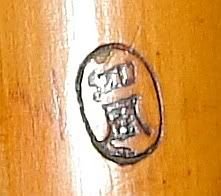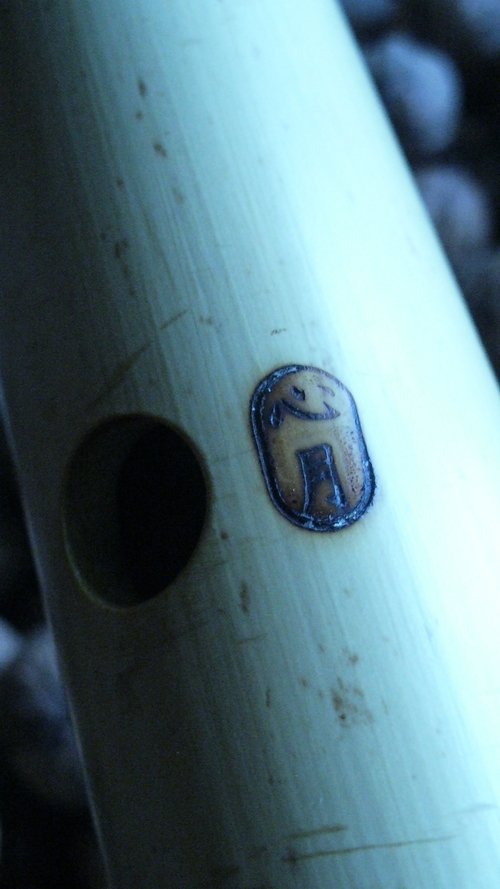Hanko Identification Help - New photographs Added
Hanko Identification Help - New photographs Added
This is the Hanko on my Edo period shakuhachi, Perry identified the first symbol as being "moon" but was unable to identify the second; can anyone help.
Thanks
Paul

Thanks
Paul

Last edited by GoStrangely on 2011-04-16, 13:59; edited 1 time in total
THe second character looks like "wind". It's a bit hard to tell with the glare going across the characters. The first one doesn't look like "moon" to me, but again the details are hard to see.
hanko
Paul, the second kanji appears to be kaze (wind) and would probably be pronounced 'fu' depending on what the first kanji is. Unfortunately, the first kanji is unreadable in this photo. A better shot might clear things up.
The top kanji is still not so identifiable and it could be the kanji for four, however it could also be a sideways 'getsu' (moon).
Though this is quite uncommon with hankos, it does happen as in this example of a hanko by a maker named Shuugetsu.
Notice that the second kanji for 'getsu' (moon) is sideways.

As such, your hanko could read 'tsukifu', 'getsufu' or 'getsukaze', all meaning 'moon, wind'.
Though this is quite uncommon with hankos, it does happen as in this example of a hanko by a maker named Shuugetsu.
Notice that the second kanji for 'getsu' (moon) is sideways.

As such, your hanko could read 'tsukifu', 'getsufu' or 'getsukaze', all meaning 'moon, wind'.
Thank you both for your help, I've always wanted to know what the hanko meant so it's great to be given some ideas.
Paul
Paul

I think the first character is "jo" or "nyo" (如). It probably goes "jofu."
I wonder if the maker was related to Sato Jofu, a student of Tanikita Muchiku. Perhaps, Sato Jofu didn't make shakuhachi.
I wonder if the maker was related to Sato Jofu, a student of Tanikita Muchiku. Perhaps, Sato Jofu didn't make shakuhachi.
"GoStrangely""GoStrangely"Thank you.
Paul
Jo (nyo, or "gotoku" in kunyomi) means "as is." Jofu literally means "like wind." For the Japanese, this almost suggests a way of being: Being as natural as wind, envisioning freely just as wind, surrendering oneself to nature, etc. The same goes for josui (如水, sui means water). This is a literal interpretation. It could be that the person inherited one character (jo or fu) from the teacher and added another character to it.
Répondre



